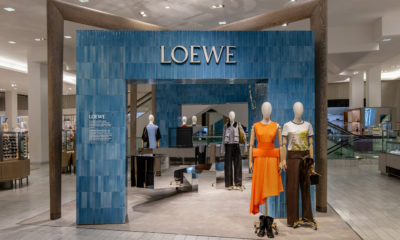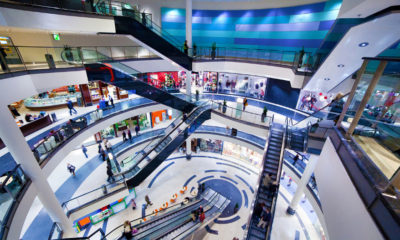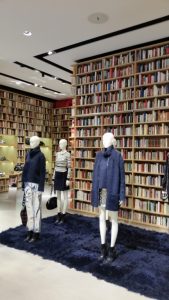This past week I had the great pleasure of being invited to speak at #conext – The Connected Commerce Show in Lille, France. Of course, I couldn’t fly to France without a four-day stop in the City of Lights, logging more than 10 miles a day walking the streets of one of the most beautiful cities on the planet.
Ambling down Boulevard Saint-Germain in Paris, I come across a store window that arrests me and holds me motionless. A single mannequin, expertly appointed, stands in a pin spot of light, surrounded by books. Thousands of them. Forty-five thousand to be precise. This would be expected if it were the densely packed Shakespeare Bookstore across the Seine from the Cathedral Notre Dame. But it wasn’t. It was Sonia Rykiel.
Floor to ceiling, row after row, front of the store to the rear, books were the walls, and among them, niches with carefully crafted collections of no more than 10 garments. A top, a bottom, a piece of outerwear, an accessory, a pair of shoes and maybe a handbag were placed so thoughtfully along a hangbar, it left no question that the curator of this art expected you to buy the ensemble. Each merchandising story was concise without being contrite.
What was there was, was to be enough: C’est tout; C’est c’est fini.
The experience reinforced the idea that we are often assaulted with an overabundance merchandise. Row after row of product meant to provide for every person’s needs. And yet, on a brain level, reams of science tells us that people can’t deal with the abundance- beyond -comprehension that we cram into the stores we design. With the ever-lengthening of the “extended aisle,” we have been cultured to believe that more is better when in fact more is just more, and often not better at all. In fact, it is worse in regards to customer experience.
Many retailers have lived under the impression that giving customers selection beyond comprehension is a good thing, but smaller selections are, in the end, what shoppers really need. This is increasingly true when the online world has already primed an emerging generation of young shoppers with choice beyond reckoning. When they arrive at the store, choice needs to be easy.
Advertisement
Having 25 types of peanut butter to choose from in the grocery aisle doesn’t make choosing which one to any easier, nor does it increase the satisfaction with the chosen product. Shoppers are actually incapable – on a brain level – to keep in mind all of the possibilities that confront them while trying to pick one jam over another, or decide which of the 25 types of peanut butter will go with their choice of fruit spread.
Thinking about what to do often puts the prefrontal cortex into a loop of cognitive dissonance, making effective decisions tough (at best) and likely impossible. It isn’t that we don’t like choice, but rather, research suggests we initially like the idea of a lot to choose from, but in the end, too many choices make the process of deciding much more difficult. Why are phone numbers 7 digits? Because that’s about as many things you can keep in active memory while allowing your brain’s pre-frontal cortex to do its number crunching comparative analysis of the options. Adding more to the mix draws on our cognitive resources leading to poor decisions that we may end up regretting later.
In short, looking at the issue on a brain level, there are a number of studies indicating that abundant selection in the shopping aisle creates more problems for customers when they are trying to make good choices, and that they are less satisfied in the choices they finally make when they are asked to make decisions from broad assortments of products.
Sheena Iyengar, of Columbia University, and Mark Lepper, of Stanford University, put grocery store customers and college students to a similar set of choices. In a series of experiments, she and her colleague tested what they referred to as the “choice overload hypothesis,” which determined that “although the provision of extensive choices may sometimes still be seen as initially desirable, it may also prove unexpectedly demotivating in the end.”
The studies by Iyengar and Lepper concluded that even though shoppers like the idea of more choice, those who are presented with fewer options in the shopping aisle buy about three times more than those who have been given an abundance of choice. What’s more, those shoppers with greater choice were also less satisfied with the choices they finally made. While greater selection may initially attract the customer, too much choice has a negative impact on the customer’s willingness to buy and be happy with what they got.
The beautiful thing about the Sonia Rykiel store was that it pointed out the obvious: In the mind’s eye, abundance blurs into a cacophony of unremarkable visual noise like the static on a TV screen that can’t tune to a single channel. It recedes into the background, offering up nothing of importance to capture the customer’s visual interest or imagination. It becomes pattern looking for an interruption to draw attention; something specific for us to focus on. Something beautiful. Something we can clearly understand, where choice is easy, because what is presented is all you really need anyway.
Advertisement
The number of books that made this fabulous retail place was indeed impressive in its own right. By sheer number alone, it made a statement that was striking and moving because of both its simplicity and its use of repetition as a design element. More importantly, despite the extraordinary intricacy of the built environment, expertly curated collections showed restraint and confidence in a mindset of simple elegance. This made it easy to choose and, therefore, the shopping experience was a memorable moment in a trip I will not soon forget.
David Kepron is the creative director of Little’s Brand Experience Studio and author of “Retail (r)Evolution: Why Creating Right-Brain Stores will Shape the Future of Shopping in a Digitally Driven World,” published by ST Media Group Intl. and available online from ST Books. His retail design work focuses on the creation of relevant shopping experiences at the intersection of architecture, sociology, neuroscience and emerging digital technologies. @davidkepron; www.retail-r-evolution.com; www.littleonline.com


 Headlines6 days ago
Headlines6 days ago
 Headlines2 weeks ago
Headlines2 weeks ago
 Headlines1 week ago
Headlines1 week ago
 Headlines2 weeks ago
Headlines2 weeks ago
 John Ryan2 weeks ago
John Ryan2 weeks ago
 Headlines2 weeks ago
Headlines2 weeks ago
 Sector Spotlight1 week ago
Sector Spotlight1 week ago
 Headlines2 weeks ago
Headlines2 weeks ago




















